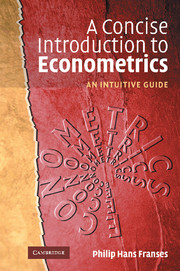3 - Econometrics, a guided tour
Published online by Cambridge University Press: 22 September 2009
Summary
This chapter serves as a review of several of the issues that get raised when one wants to use an econometric model to answer a practical question. The first section of this chapter outlines why I focus on practical problems and not so much on economic theories. The next five sections deal with the five main issues that econometricians have to think about in practice. First one needs to identify and formulate the practical question. Then one has to collect the relevant data that one can consider for answering the question. Next, one combines these two first steps and in many cases a potentially useful econometric model can be chosen. When these matters are all dealt with, the empirical analysis of the model can start. This involves parameter estimation, diagnosing model adequacy, and modification of the model if it is not adequate in some sense. Finally, one tries to implement the model to answer the question.
Practical questions
A long time ago, an econometrician was viewed as an assistant to the economic theorist. The theorist came up with a theory and the econometrician was supposed to collect the relevant data and to show that the theorist was right. Of course, things could go wrong, but that was mainly a matter of concern for the econometrician. In some cases this is still a source of econometric activity, but in my perception this is a rather unfruitful strategy.
Information
- Type
- Chapter
- Information
- A Concise Introduction to EconometricsAn Intuitive Guide, pp. 36 - 80Publisher: Cambridge University PressPrint publication year: 2002
